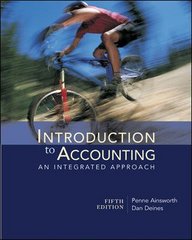Chapter 2 - Introduction to Audit Services and Financial Statement Audit 12. Which of the following is both true for external financial statements auditor and an internal auditor? A. They help the entity's employees to perform their functions effectively B. The focus of the engagement is financial information only On C. They are required to be independent of the entity D. They ultimately report their findings to the audit committee 13. These audits are similar in most respects. A. Operational and compliance C. Financial and compliance B. Operational and government D. Financial and operational 14. Which statement is correct regarding the relationship between internal auditing and the external auditor? A. Some judgments relating to the audit of the financial statements are those of the internal auditor. B. The external audit function's objectives vary according to management's requirements. C. Certain aspects of internal auditing may be useful in determining the nature, timing and extent of external audit procedures. D. The external auditor is responsible for the audit opinion expressed, however that responsibility may be reduced by any use made of internal auditing. 15. Which of the following terms best describe the audit of a taxpayer's return by a BIR auditor? A. Operational audit C. Compliance audit B. Internal audit D. Government audit 2 -4 MULTIPLE CHOICE QUIZZERS 1. Audits of historical financial information are governed by: 1. Philippine Standards on Auditing Il. Philippine Standards on Assurance Engagements Ill. Philippine Standards on Quality Control A. I and II only C. II and Ill only B. I and Ill only D. I, II and Ill 2. The predominant type of attestation service performed by CPAs is A. Audit B. Review C. Compilation D. Management consulting 3. Which of the following is an incorrect phrase? A. Auditing is a systematic process. B. Auditing objectively obtains and evaluates evidence. C. Auditing evaluates evidence regarding assurance. D. Auditing communicates results to interested users. Aim... Believe... Claim... Page 57 2021/9/10 09:35Chapter 2 - Introduction to Audit Services and Financial Statement Audit 4. The word auditing comes from the Latin audire, which means: A. To see C. To detect B. To hear D. To test 5. Which of the following types of audits is performed to determine whether an entity's financial statements are fairly stated in conformity with generally accepted accounting principles? A. Operational audit C. Compliance audit B. Financial statement audit D. Performance audit 6. The overall objectives of the auditor in conducting an audit of financial statements are 1. To obtain reasonable assurance about whether the financial statements as a whole are free from material misstatement, whether caused by fraud or error. II. To report on the financial statements. Ill. To obtain conclusive rather than persuasive evidence. IV. To detect all misstatements, whether due to fraud or error. A. I and ll only C. I, II and Ill only B. II and IV only D. I, II, Ill and IV 7. An auditor's overall objective in a financial statement audit is to A. Determine that all individual accounts and footnotes are fairly presented. B. Employ the audit risk model. C. Express an opinion on the fair presentation of the financial statements in accordance with generally accepted accounting principles. D. Detect all errors and fraud. 8. Which of the following best describes the objective of an audit of financial statements? A. To express an opinion whether the financial statements are prepared in accordance with prescribed criteria. B. To express an assurance as to the future viability of the entity whose financial statements are being audited. C. To express an assurance about the management's efficiency or effectiveness in conducting the operations of entity. D. To express an opinion whether the financial statements are prepared, in all material respect, in accordance with an identified financial reporting framework. 9. It refers to the level of the auditor's satisfaction as to the reliability of an assertion being made by one party for the use by another party. A. Confidence Level C. Assurance Level B. Reasonableness Level D. Tolerable Level Aim... Believe... Claim... Page 58 2021/9/10 09:36








